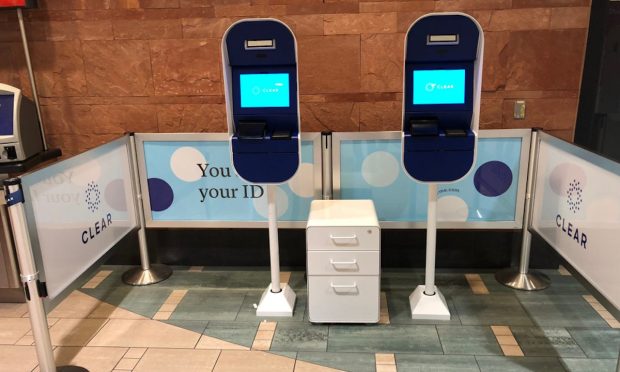CLEAR’s Expanding Points of Access May Point to Clearer Path for Digital IDs

In the bid to build closed-loop systems, there’s a bit of a catch-22: Both sides have to agree to interact, and both sides — the provider and the consumer — must have critical mass. Otherwise, no one joins up.
Now, that’s a simplistic statement, and the journey to getting consumer behaviors firmly entrenched — whether in payments or in any other interaction — is a complex one. Especially when high tech — consumers’ security and trust — is involved
To that end, it may not come as a surprise that CLEAR, the identity app, has been busy striking a number of pacts that bring biometrics further into the field — across a variety of use cases, well beyond the confines of the airport setting.
As reported by The Wall Street Journal, CLEAR has set up “temporary” kiosks in several retail locations, where consumers can sign up for the screening service. Through CLEAR Plus subscriptions (which cost about $179 annually), the service prequalifies travelers with biometrics instead of documents. Those locations include a Showfields Inc. interactive mall, as well as the San Francisco and New York City stores of Rimowa, a luxury luggage retailer. Per the Journal, the temporary locations also offer CLEAR gift cards.
CLEAR has indeed been making strides. The company said in its most recent shareholders’ letter that in the third quarter of this year, total cumulative enrollments accelerated year over year to 8.1 million, “driven by strength in both CLEAR Plus enrollments and platform enrollments.” The company said, too, that new enrollments in the quarter were 1.8 million and had more than doubled sequentially.
To get a sense of how the broader spectrum of use cases may be gaining some stickiness, the company disclosed in the same earnings report that third-quarter 2021 total cumulative platform uses reached 72.2 million, equating to 27% growth year over year. Part of that tailwind came from what the company said was “rapid growth” of Health Pass usage, which allows individuals to upload proof of vaccination, negative COVID tests and other verified health-related information.
In yet another use case, as noted by PYMNTS, this week CLEAR announced its new “Home to Gate” free in-app feature, integrating the Uber ride-hailing software within the CLEAR app and platform.
Read more: CLEAR’s Uber Pact a Smart Chess Move With Major Growth Potential for Biometric ID
Per the statement, “With this partnership, CLEAR app users will be able to use the Home To Gate feature and its data-driven insights to find out exactly when to leave for their flight and reserve an Uber ride ahead of time, creating a more seamless, predictable travel experience.”
In this way, CLEAR gets tied, at least a bit, to Uber — and is also tied to a continuum of activities that get consumers from booking travel to actually traveling.
In September, the company announced that “Resy, the hospitality technology platform owned by American Express, is partnering with CLEAR … to provide CLEAR’s Health Pass technology to all Resy restaurants free of charge through 2022.”
The retail and Uber pacts come on top of partnerships that bring the biometric and verification features to several dozen sports and entertainment partners.
The value of a platform model is apparent here: Consumers already familiar with and transacting on a platform can more easily embrace new use cases. For the platform firm itself, it’s not a terrifically high hurdle to add new functionalities – to extend a brand, so to speak.
But there are some specific hurdles that present challenges when it comes to biometrics, which may drag on both sides of the equation — the points of acceptance and the consumer base itself.
In “Authenticating Identities in the Digital Economy,” a PYMNTS and Mitek collaboration, less than 10% of 2,255 U.S. consumers surveyed said they used biometric authentication methods. About 55% of consumers trust biometrics more than passwords and PINs, which implies that 45% don’t. Those stats indicate a growing awareness of the advantages inherent in biometrics, but that there is still work to be done to gain critical mass with biometrics — in what will be a marathon, not a sprint.
See the report: Businesses Challenged to Close the Consumer Biometric Perception vs. Use Gap